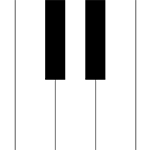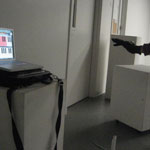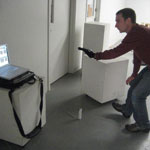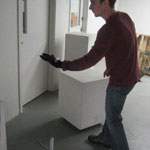This was one of the two projects that I decided to redo for my new media sculpture class. After the final project had been completed, the teacher allowed us the chance to redo/re-present any of the pieces we did earlier in the semester. I don’t remember getting particularly bad grades on the original Zelda Head and Sound Sculpture, but I wanted to try to make them closer to what I intended them to be originally. Along with that, I had gotten some interesting ideas from the critiques for each of the projects that I wanted to try to work in.
For this project, I took the original Sound Sculpture I had made and it easier to use. I also incorporated the infrared light glove I made for the Wiimote Control Car into the piece. This meant that instead of holding the Wii remote and pointing it at a sensor bar, like one did in the original piece, one would move one’s hand (with the glove on) around on a horizontal plane (forwards, backwards, left, right, etc.) to play music. Also, I simplified the programming side of the piece. Rather than using a C# program to produce the sound, I used a Flash app to make the sound. I created two flashes, one 29-key keyboard and a 30-key keyboard. The first keyboard goes from C1 to E3, and the second keyboard goes from F3 to Bb5. Onscreen, I arranged the second keyboard on the top of the screen (since it has higher notes) and the first keyboard on the bottom of the screen (since it has lower notes). The reason I made two keyboards instead of one was simply so that the keys would be bigger and easier to see. If I had put all of those keys on one keyboard (and had the whole keyboard fit on my screen), the keys would have been too small to see. In addition to the two Flash keyboards, I was still using the C# program to control the computer mouse with the Wiimote and IR lights from the glove.
The Wiimote and glove idea was the same as it was in Wiimote Control Car. The user wears the glove on his or her hand and holds it above the Wiimote which stands on the ground, face up. Imagine a plus sign (or a 2D grid, or even a D-pad). If the user moves his or her hand left or right above the plus sign’s middle line (+), the top keyboard (higher octaves) is played. The further left the user’s hand, the lower the notes that are played. The further right the user’s hand, the higher the notes that are played. If the user moves moves his or her hand left or right below the plus sign’s middle line (+), the bottom keyboard (lower octaves) is played. Again, moving the hand left and right plays lower and higher notes respectively.















